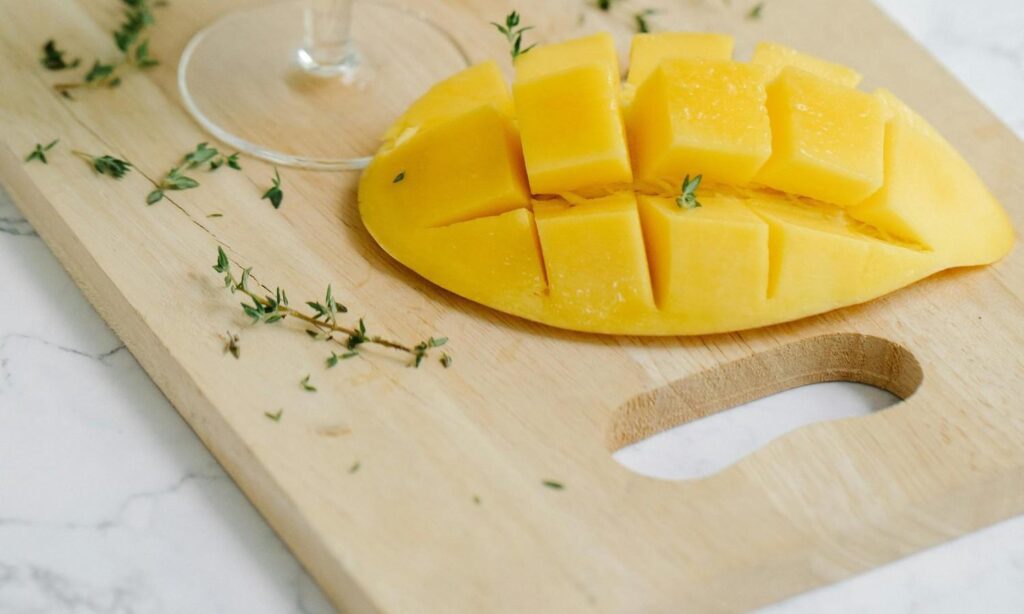A single bite of a ripe mango can stop you in your tracks. The explosion of sweet, tangy juice, the soft yet vibrant flesh, the faint whisper of tropical sunshine—it’s no wonder this fruit has a day dedicated to its glory. National Mango Day, celebrated every July 22, isn’t just a nod to a delicious treat; it’s a cultural moment that’s capturing American hearts and taste buds in a big way. From smoothie bowls in Los Angeles to mango salsa in Miami, this tropical superfruit is weaving its way into kitchens, restaurants, and even our collective imagination. So why are Americans falling head over heels for mangos all over again? Let’s peel back the layers and find out.
A Fruit Steeped in History and Heart
Mangos aren’t just another fruit on the grocery store shelf; they carry a story that spans millennia. Originating in South Asia over 5,000 years ago, mangos have been revered as symbols of love, prosperity, and unity in places like India, where they’re the national fruit. The poet Kalidasa sang their praises, and Mughal emperor Akbar planted 100,000 mango trees in a single grove. Even the paisley pattern, born in India, is said to be inspired by the mango’s iconic shape.
When I first tried a mango as a kid, it was a revelation. My dad, who grew up in a small town in Florida, would tell me stories of neighbors sharing baskets of backyard mangos during the summer—each fruit a gesture of goodwill, like a handshake in edible form. That sense of connection, rooted in cultures far older than our own, is part of what’s driving the mango’s resurgence in the U.S. It’s not just about flavor; it’s about feeling something deeper, something shared.
The Nutritional Powerhouse We Can’t Resist
Let’s talk about why mangos are often called a “superfruit.” A single ¾-cup serving of mango—roughly 70 calories—packs a nutritional punch that’s hard to ignore. According to the National Mango Board, this vibrant fruit delivers:
- 50% of your daily vitamin C, boosting immunity and aiding in iron absorption.
- 15% of daily folate and copper, supporting cell function and energy production.
- 8% of vitamins A and B6, promoting eye health and brain function.
- 7% of daily fiber, aiding digestion and heart health.
Maya Vadiveloo, an assistant professor at the University of Rhode Island, sums it up perfectly: “The primary benefit, in addition to being a really good source of vitamin C, is that [mangos] are a decent source of vitamin A, folate, and are pretty high in fiber, which is beneficial for colon cancer prevention, heart disease, and weight control.”
Since the COVID-19 pandemic, Americans have been gravitating toward health-focused diets, and tropical fruits like mangos are riding that wave. Dan Spellman, marketing director for the National Mango Board, notes that “mango supply and demand are showing promising signs of growth” compared to just a year ago. It’s no coincidence that mangos, with their low-calorie sweetness and nutrient density, are becoming a go-to for health-conscious eaters.
From Exotic to Everyday: The Mango’s American Journey
Mangos first arrived in the U.S. in the early 19th century, with Florida’s warm climate becoming a natural home for cultivation by 1833. Today, states like Florida, California, Hawaii, and Puerto Rico grow mangos domestically, though imports from Mexico dominate the market, with 422,000 tons exported to the U.S. in 2017 alone. The Tommy Atkins variety—big, red, and slightly tart—is what most Americans picture when they think of a mango, but varieties like the sweet Ataulfo (or “honey” mango) are gaining fans fast.
What’s changed in recent years is how accessible mangos have become. Once considered an exotic delicacy, they’re now a staple in supermarkets, farmers’ markets, and even online delivery services like Instacart, which partnered with the National Mango Board in 2025 to give away free mangos on National Mango Day. This push to make mangos a household name is working. Jessica Bohlman of the National Mango Board says, “Mangos are considered the most popular fruit in the world because of their incredible reach and vast cultural significance.”
I remember the first time I saw a mango in my local grocery store in the Midwest, far from any tropical climate. It felt like a small miracle—a taste of somewhere far away, right there in aisle 7. That accessibility is key to why mangos are no longer just a vacation treat but a daily indulgence for many Americans.
A Culinary Chameleon: Mangos in the Kitchen
If you’ve ever sliced into a ripe mango, you know it’s a sensory experience—juicy, fragrant, and endlessly versatile. From sweet to savory, mangos elevate dishes in ways that feel both familiar and exciting. Here are just a few ways Americans are incorporating mangos into their meals:
- Smoothies and Breakfast Bowls: Blend mangos with yogurt, spinach, and a touch of honey for a nutrient-packed start to the day.
- Salsas and Salads: Pair diced mango with tomatoes, cilantro, and lime for a vibrant salsa that’s perfect with fish tacos or chips.
- Desserts: Think mango lassi, sorbet, or even a sticky mango rice pudding for a tropical twist.
- Savory Dishes: Mango chutney adds a sweet-spicy kick to grilled chicken or pork, while mango curry brings depth to vegetarian meals.
The National Mango Board’s website boasts over 300 recipes, from mango smoothies to savory mango curry, proving there’s no limit to this fruit’s culinary potential. During last summer’s National Mango Day, I tried my hand at a mango salsa for a backyard barbecue. The way it brightened up grilled shrimp was a game-changer—my friends couldn’t stop raving about it, and neither could I.
Suwann Frison, the National Mango Board’s Foodservice Marketing Manager, points out that mangos align with the growing demand for plant-based options: “As immunity remains a priority for consumers today, we’ll continue to see a rise in plant-based options on menus to meet the demand.” Restaurants across the U.S. are catching on, with mango-infused dishes popping up everywhere from fast-casual chains to fine dining.
The Cultural Connection: Mangos as More Than Food
Mangos carry a weight of meaning that goes beyond their flavor. In India, giving a basket of mangos is a gesture of friendship, a tradition that’s starting to take root in the U.S. as well. “Mangoes are a symbol of love and friendship in India,” says Jessica Bohlman. “Many companies and businesses send dozens of mangos to their clients and partners each year during mango season as a gift.”
This sense of connection resonates deeply in a country as diverse as the U.S. Mangos bridge cultures, appearing in Caribbean jerk dishes, Mexican agua frescas, and Indian-inspired desserts. They’re a reminder of shared humanity, of the way food can tell stories of migration, adaptation, and celebration. At a recent community potluck I attended, a neighbor brought a mango lassi that sparked conversations about her childhood in Mumbai. That one dish turned strangers into friends, all thanks to the “king of fruits.”
National Mango Day itself, established by India’s National Horticulture Board in 1987, has grown into a global celebration. In the U.S., it’s a chance to explore new varieties—like the creamy Kent or the tangy Keitt—and to appreciate the fruit’s role in bringing people together. Events like mango festivals in Florida’s Keys, where locals share backyard harvests and bakers whip up mango breads, are becoming summer staples.
The Future of Mangos in America
As we look ahead, the mango’s star is only rising. With climate change making tropical fruits more viable in places like Florida and California, domestic production is growing. Meanwhile, consumer demand is surging, driven by a desire for flavorful, nutrient-rich foods. The National Mango Board’s vision is clear: to make mangos a daily necessity in every U.S. household.
But it’s not just about numbers. It’s about the moments mangos create—whether it’s a kid tasting their first mango smoothie, a chef experimenting with a new recipe, or a family sharing a bowl of fresh mango slices on a hot summer day. As Jeff Wasielewski, a tropical fruit expert at the University of Florida, advises, “Keep an unripe mango at room temperature in a brown paper bag with other fruit to help speed its ripening.” That simple act—waiting for a mango to reach its peak sweetness—feels like a small ritual, a reminder to savor life’s little joys.
A Sweet Invitation
This National Mango Day, why not dive into the world of mangos yourself? Try a new recipe, visit a farmers’ market, or share a mango with someone you love. It’s more than just a fruit—it’s a chance to connect, to explore, and to rediscover the simple pleasure of a perfectly ripe bite. What’s your favorite way to enjoy a mango? Or better yet, what new mango adventure will you embark on this summer? The possibilities are as endless as the fruit’s vibrant flavors.










